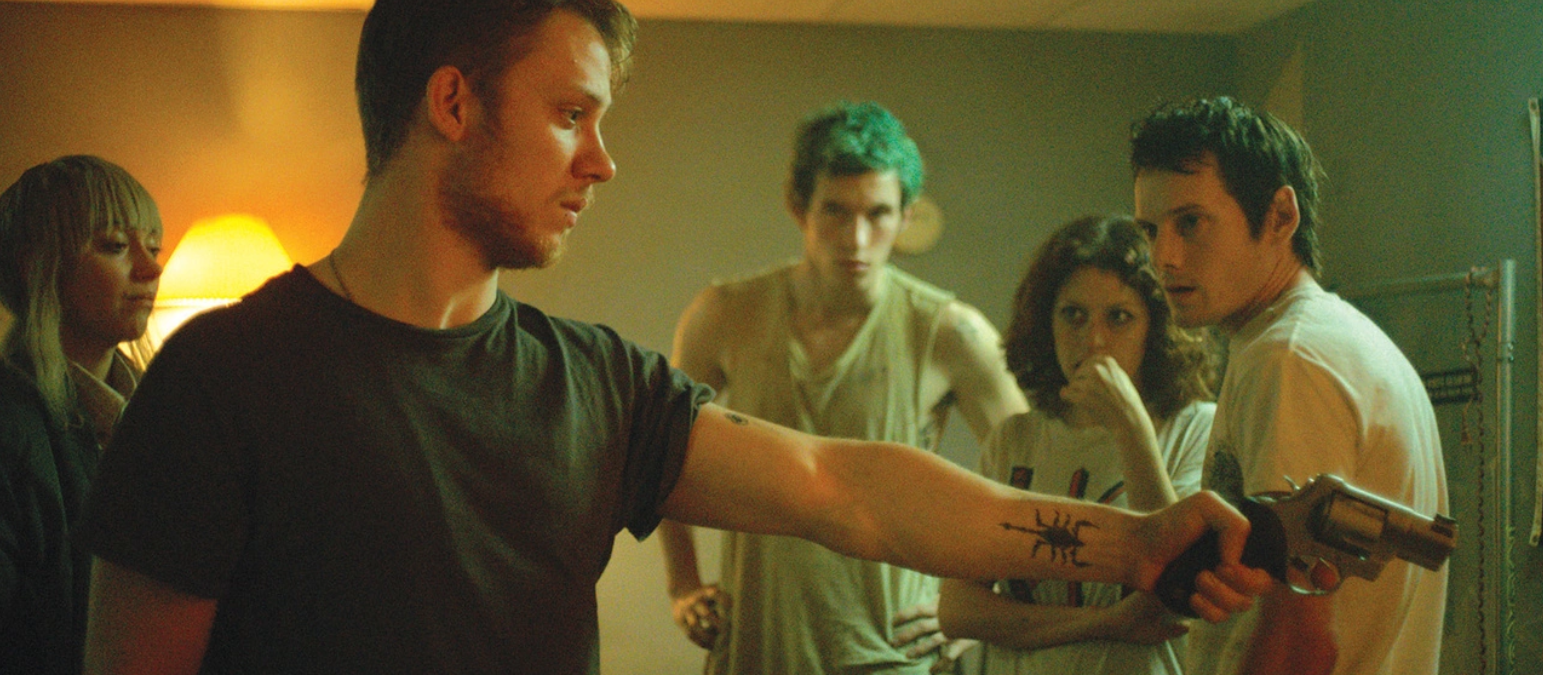

“Blades only. Sloppy is fine. Try not to hit the bone.”
Jeremy Saulnier’s Green Room pits a group of radical punk rockers against a cult of neo-Nazi skinheads at a grimy thrash bar out in the middle of nowhere. Starving artist types, the Ain’t Rights accept a gig at the backwoods venue to make ends meet, only to discover that the audience is hostile to their politically-charged material. Common ground is briefly found when the band plays a song that connects with the crowd—a mosh pit forms as the film drops into classically-scored slow motion—but after the show, when one of the musicians returns to the titular lounge space to retrieve a cell phone and mistakenly bears witness to an impulsive murder, any vestigial good will evaporates immediately.
The Ain’t Rights (Anton Yelchin, Alia Shawkat, Joe Cole, Callum Turner) are locked in the green room along with the victim’s friend (Imogen Poots) while the bar’s owner (Patrick Stewart) issues increasingly menacing threats from the other side of the door. After a broken arm and a box cutter evisceration, a real standoff takes shape. Panic, chaos, and additional carnage ensue as Saulnier’s screenplay toys with our sympathies by offering unlikely allies, touching character moments, and grisly deaths. The villainous gang is filled out by Macon Blair, Mark Webber, Kai Lennox, Eric Edelstein, and Jacob Kasch.
Though more than a little contrived (pains are taken to keep cell phones and firearms on the fringes, though the latter are used extensively toward the end), Green Room is effective because Saulnier approaches his pulpy material with the same uncommon thoughtfulness that marked his revenge-thriller debut, Blue Ruin. His characters are more than fresh meat in a slasher. Through economical storytelling he gives these individuals (as well as the band as a collective unit) a sense of authentic depth, so much so that several gory deaths blindside the viewer conditioned to expect that any decently well-rounded character is bound to survive. Even some of the neo-Nazis, though cartoonish, receive individual personalities and motives.
Undergirding the rich screenplay is an impressively assured style. Each frame, cut, diegetic sound, and special effect is arranged for maximum visceral impact and unyielding tension, leaving the gentle, vulnerable moments between the bursts of scrappy violence pregnant with a raw sense of sheer terror. Over and above the solid execution of the material, the film’s lilting pace emphasizes the horror that follows the witnessing of senseless violence rather than violence itself, as well as the human capacity for enduring despite unspeakable psychological torment.